Yahushua`s suffering and the Journal of the American Medical Association
Original Document done By Edwin. A Blum, D Theol., Th.D.
(Notes marked with a star * and in italics were added by us.)
These illustrations by Floyd Hosmer appeared with the original JAMA article and are used by permission of the Mayo Clinic/Foundation, Rochester, Minnesota.
A Methodist pastor asked a member of his congregation who is a pathologist, "What do you think was the physical cause of the death of Yahushua?" From this innocent question a study developed and eventually an article was written and submitted to JAMA (The Journal of the American Medical Association). The article was a united effort of a medical pathologist, a Methodist pastor, and a medical illustrator. The article was published as a "Special Communication" and appeared in a series which JAMA published dealing with human torture from ancient times to the present day.2 The nine-page article evoked a tremendous reaction, both positive and negative.
The editors of the Journal published nine more pages of letters responding both positively and negatively to the article.3 The authors received requests for reprints from every state and over thirty-five countries, including eight Soviet bloc countries. Some of the wire services picked up the news of the controversy and gave it further publicity.
Some criticisms of the article were very harsh and raised issues which need understanding both for Christians and non-Christians. Non-Christians may think that the New Testament has no historical validity, or they might mistake the teaching of the Gospels concerning Yahushua's death. Christians might wonder about the foundations of their faith, or how they can respond to these perceived problems.
The purpose of this article is to review the criticisms and to provide some answers and further documentation for those who want to investigate the matter for themselves. The concerns of the article and the "Letters" cry out for extensive discussion and interchange. Martin Hengel, the outstanding Tubingen scholar, has said "No human death has influenced and shaped the world of late antiquity, and indeed the history of mankind as a whole down to the present day, more than that of the Galilean craftsman and itinerant preacher who was crucified before the gates of Jerusalem in AD 30 as a rebel and messianic pretender."4
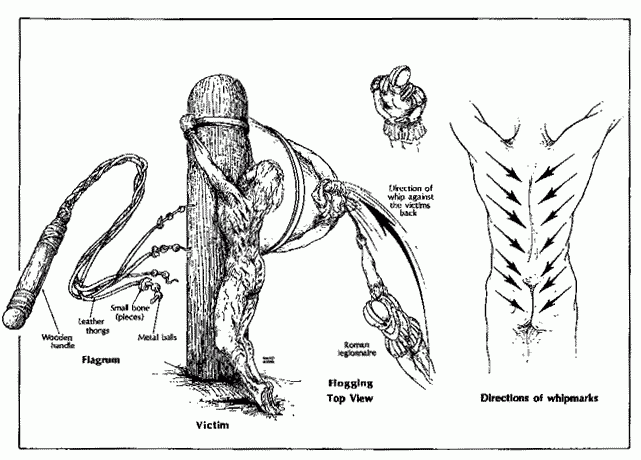
* (This (above) picture is only used as an example. We know now that the person was stretched out between two posts and beaten from the front and from the back)
Answers to attacks on Christianity
For the Christian the central event in the history of the universe is the series of events which embrace the death, and the resurrection of Yahushua (Jesus Christ).The Gospels are not biographies but narratives that tell us a limited amount about the character and teaching of Jesus. They focus on His death and resurrection. The Epistles, or Letters of the New Testament, are in the main, explanations of that death and resurrection. They draw out the implications for life and thought which flow from that death.
The reality of that death and the historical reliability of the New Testament documents are central to the Christian faith. The New Testament itself states that the crucifixion of the Messiah is a stumbling block to the Jews and an intellectual offense to the learned.5
Why is a crucified Messiah (Christ) a stumbling block to Jews? There are two major considerations. Crucifixion is a horrible death and in Jewish Old Testament thinking, the person who is crucified is also "hung on a tree."
Deuteronomy 21:22-23 states that anyone who is hung on a tree is "under YHWH's curse." The Messiah by definition is the "blessed one." How can the blessed one be under YHWH's curse? This is the dilemma for the thoughtful Jew. 6 The Greeks were the intellectual leaders of the Greco-Roman world. A crucified Galilean carpenter was not impressive to them. In general, Paul said they thought it "foolishness. 7" So how could this man's death be the wisdom of YHWH?
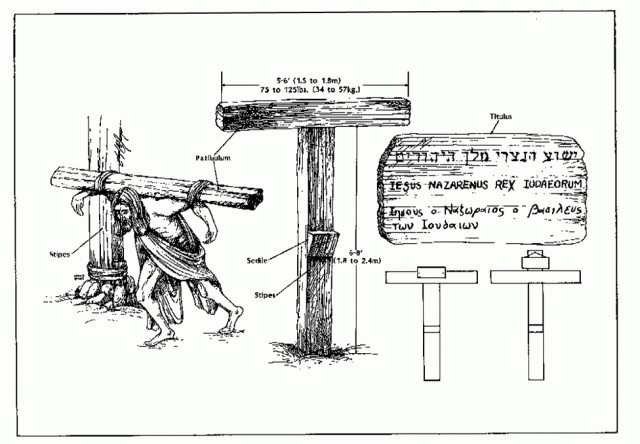
*(The following picture is an illustration and is not necessarily depicting the true stake (Stauros) or pole that was generally used during that time period.)
Historical Criticisms
A number of criticisms against the article address the problem of the historical reliability of the New Testament. Some of the critics simply stated that the New Testament documents are theological and not historical.The usual Christian view is that the documents are historical and at the same time, theological.
The unique claim of Christianity is found precisely at the point that the divine has intercepted human history. (This is true also of Judaism, where YHWH invades human history to give his law and to redeem.) The incarnation is not a myth, but an actual event which occurred in space/time history. The virgin birth is not a myth, but a unique event which occurred once in human history.8
Conservative Christianity has always held that the miracles which Yahushua did were not simply slight-of-hand or psychological. He actually did miracles which were observable to nonbelievers. In fact, there is no evidence from the ancient world that anyone denied that He did miracles.In the New Testament, His opponents acknowledged that He did miracles,' but they attributed the power to Beelzebub or Satan.10 Outside the New Testament there is evidence from the Talmudic tractate Sanhedrin (43a) that some of His opponents accused Him of sorcery.
Celsus, the Greek philosophical critic of the 2nd century, also accused Yahushua of magic.11 Josephus, the Jewish historian, also attributes miracles or wonders to Yahushua.12 The New Testament documents present a picture of Yahushua. They present their material as factual and indeed often as eye-witness material. The Gospels have been critically examined for hundreds of years. No other literature has been subjected to such intensive analysis.
The quest for the historical Yahushua is not some new undertaking. Any critic must expect that his criticism will be carefully examined and that his arguments and philosophical assumptions assessed. Albert Schweitzer was known to many physicians for his humanitarian and medical work in Africa. What is not so well known is that in addition to his doctorate in medicine, he had also earned a doctorate in theology.
The book which earned him his doctorate in theology is entitled The Quest of the Historical Jesus: A Critical Study of its Progress From Reimarus to Wrede.13 Schweitzer closed himself in a large room with hundreds of studies which had been done by learned German scholars during a period of more than 150 years. His general conclusion was that each scholar, as he viewed down the well of history, saw in the main a reflection of his own liberal self.
Yahushua was constantly reinterpreted through the grid of the liberal interpreter. Schweitzer's own conclusion was that Yahushua was an "apocalyptic teacher." Schweitzer's quest for the historical Yahushua is not illegitimate. Each generation, and indeed each individual, must assess the significance of Yahushua for himself.
James Peter has written a helpful book entitled: Finding the Historical Jesus: A Statement of the Principles Involved.14 For a broader source book on the issue of the historical Yahushua, cf. Harvey K. McArthur's book, In Search of the Historical Jesus.15
These works will orientate the physician/dentist/scientist into the issues of historicity. The search for the "real Yahushua" has been taken up not only by Christians but recently by many Jewish scholars. Donald Hagner has authored a recent work entitled: The Jewish Reclamation of Jesus: An Analysis of the Modern Jewish Study of Yahushua.16 Hagner's thesis is that many Jewish scholars have been eager to reclaim Yahushua as a Jew.
In order to reclaim Yahushua, these scholars have often had to subtract material from the New Testament picture of Yahushua which they find unpalatable. He finds for the most part their "subtractions" or reinterpretations to be unconvincing.
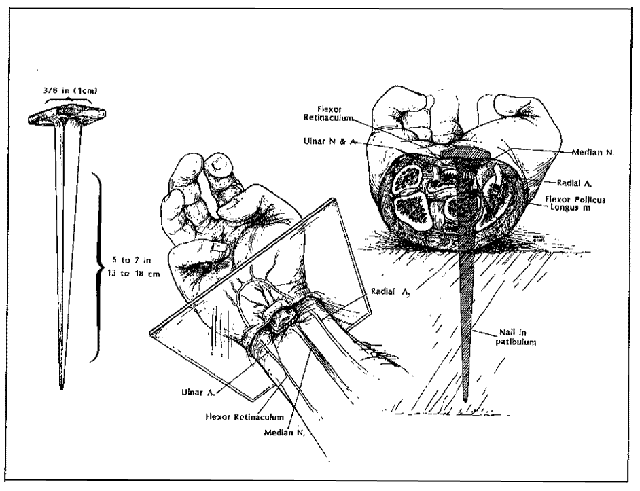
Specific Historical Problems
1. Several of the critics find a difficulty in that Yahushua is said to die on a stake in the Gospels and that the book of Acts says that Yahushua was hung from a tree.17 When a person is crucified he is nailed to a stake. From the point of view of the Jewish law, he is also hung up on the tree. The verb which is translated "hung" or "hung up" is used in the literature of the time to mean crucify. The New Testament in the book of Acts is not stating that Yahushua died by hanging in our sense of the term, implying that a person died from a broken neck or by suffocation.
2. Rather the terminology "Yahushua was hanged" was used to make the connection that He dies under the curse of YHWH.
3. The thought is, according to Galatians 3:13, that He suffers the curse which is due to all men for violation of the law and He bears it as a substitute.18
4. Another specific criticism of the article concerns the Jewish responsibility for the death of Yahushua.
5. This is a complicated issue which has been a source of much Jewish persecution and anti-Semitism down through the centuries. Because the Jewish people have suffered so much, they are sensitive and eager to avoid any connection of Jews to Yahushua death.
6. The New Testament clearly states Jewish involvement. 19 To assign some Jewish role in the death of Yahushua is not the same as being anti-Semitic. The early Christians were also Jews.
For the first twenty years of the church almost all believers in Jesus as the Messiah were Jewish. The fact that certain Jews in Yahushua's day were involved does not mean that all Jews in that age or any age are to be blamed.
The New Testament teaches multiple causation in the death of Yahushua. His Jewish opponents were involved, His own disciple betrayed Him, the Roman judge, Pilate, issued the sentence, and Roman soldiers carried out the actual execution. However, the ultimate causation is laid not at the foot of the Jews, but with Yahushua and His Father.
Yahushua states that no one takes His life from Him. He lays it down of His own accord.20 Paul writes in Romans that "YHWH did not spare His own Son but gave Him up for us all."21 This text is an obvious allusion to the Abraham-Isaac test.22 Abraham is able to spare his unique son, Isaac, because YHWH provides a substitute. But in the case of Yahushua, there is no one else who can fill His place.
Down through the centuries the Christian church in its worship has often recited the words: He was crucified under Pontius Pilate." Roman, as well as Jewish involvement is the New Testament teaching. From a broader theological perspective, it is the sin and rebellion of the world which is a primary cause of the death of Yahushua.23
The popular criticism of Jewish people as being involved in the sin of deicide widely misses the mark. Because of Jewish desire to put as much distance as possible between the Jews of Yahushua's day and their involvement in the trial and death of Yahushua, the trials of Yahushua have become battlegrounds.This issue was singled out in the "Letters" for particular criticism. The main reason for this criticism relates to the previous subject, Jewish involvement and responsibility.
It is alleged that the New Testament writers desired to put the blame for Yahushua's death on the Jews, and to absolve the Romans of their responsibility. The motivation for this was to avoid of fending the state. As argued above, the New Testament does set forth multiple causation in the death of Yahushua. The trials of Yahushua have been minutely studied, the controversies over their nature, number, and objectivity have been reviewed in numerous scholarly works.24 The assessment of the trials is complicated by the elusive nature of the "facts." Because of the destructions of Jerusalem in 70 and 132 A.D., extra-Biblical contemporaneous material is rare.
Citations from Talmudic literature (whether Palestinian or Babylonian) are fraught with numerous dating problems. Material dating from 100 A.D. is mixed with material from 600 A.D. Even the writings of Josephus, the Jewish historian, contain numerous problems. Josephus writes after the destruction of Jerusalem and the transmission of his text has suffered. Statements are found in Josephus which are evidently Christian interpolations. The entire corpus of Josephus would have been lost if it had not been transmitted through Church channels.
A review of the literature on the trials of Yahushua will show that arguments about Jewish or Roman involvement are not simple.They involve a web of presuppositions. An interpreter should not be too quick to assume that the only contemporaneous or near contemporaneous accounts (i.e., the New Testament) can be criticized or corrected by later documents. The interpreters' Tendenz must be assessed because no interpreter comes to the evidence with absolute neutrality.
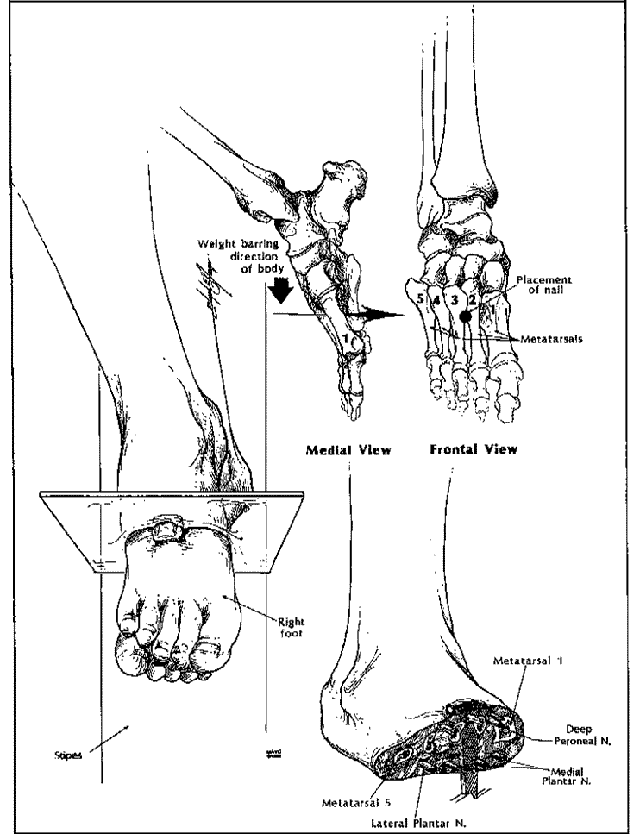
Miracles in Christianity
A crux issue for many physicians and scientists is the miraculous or the supernatural. Since the Christian faith is centered on an unusual Person - His incarnation, His resurrection, and His miracles - this issue must be faced. Some critics attempt to write off the whole subject of the historicity of Yahushua by saying: "We cannot forget that in the same book, we read about Yahushua walking on water, casting out demons, and rising from the dead."25
There is no question that the issue of spiritual phenomena and particularly, the demonic, cause unusual problems for the scientifically-minded. The Christian Medical Society produced an international symposium on the subject of demon-possession.26 Along the same theme, the psychiatrist, M. Scott Peck, has written a widely read book on the reality of demonic evil.27
On the subject of miracles, C. S. Lewis, the Cambridge scholar who was a popular Christian apologist, authored a study entitled Miracles. For the general reader, this work has much help. On a deeper level, Colin Brown has written a major treatise, Miracles and the Critical Mind.28 A massive study of Yahushua's miracles was done in Holland and is available in translation.29
If one believes in the reality of a God who made the universe and then further believes that in the Person of Yahushua the fullness of YHWH is manifested bodily,30 miracles such as walking on water, turning water into wine, or even physical resurrection of the body are not all that difficult.
The nature of the miracle and the significance of the miracle need to be carefully examined in each case. It is unscientific to assert that miracles are impossible. That is a philosophic statement, not a scientific one.
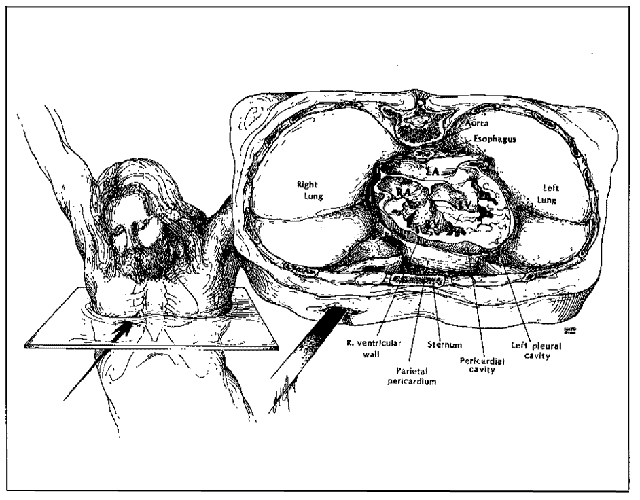
Medical Problems
A number of responders objected to the article on medical grounds. One stated that you cannot do an autopsy without a body.
Another argued that medical information should not be taken from theological documents. Still another objected that the medical conclusions were moved into the realm of theological significance or apologetics.
It must be admitted that you cannot do a technical autopsy without a body. But given the importance of the death of Yahushua to the historic Christian faith, it is certainly appropriate to at least speculate on the physical cause of the death. One doctor made the interesting observation that Yahushua voluntarily dismissed His Spirit.31
This could mean that the exact causation of the physical death will always be beyond our reach.
Conclusion
As a Christian, I found the article, the "Letters," and the editorial to be of extreme interest. Interdisciplinary studies often bring new light on a familiar subject.
The careful reader of the article gains some understanding of the brutality which was so common in that age.
We can learn something of what the physical sufferings of Yahushua must have been like. However, what the spiritual sufferings of a perfect man must have been who was "made sin" for the sake of us all will always be beyond us and yet it calls for the most careful consideration.32 How will we ever be able to grasp Isaiah's words:
"Yet it was the Lord's will to crush Him and cause Him to suffer, And though the Lord makes His life a guilt offering, He will see His offspring and prolong His days, And the will of the Lord will prosper in His hand" (Isaiah 53:10)
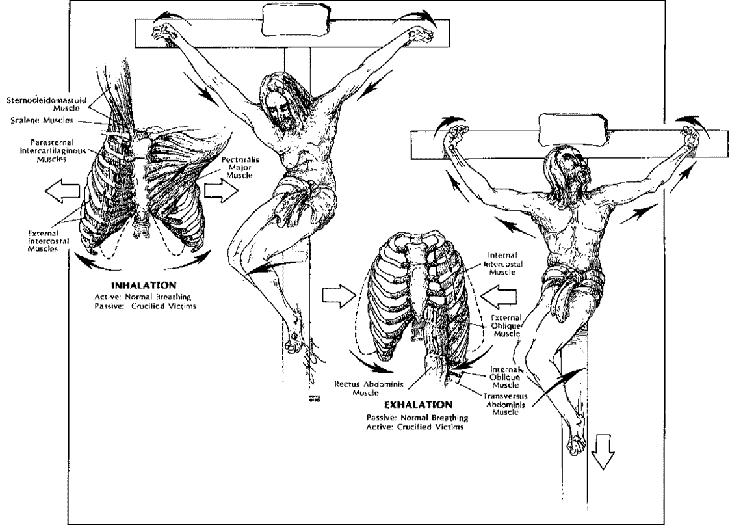
References
1. "Special Communication," Journal of the American Medical Association, Vol. 255, No. 11 (March 21, 1986): p. 1455.
2. See "Editorials," Journal of the American Medical Association, Vol. 255, No. 22 (June 13, 1986): p. 3157.
3. "Letters, "Journal of the American Medical Association, Vol. 255, No. 20 (May 23/30, 1986): p. 2752.
4. Martin Hengel, The Atonement: The Origins of the Doctrine in the New Testament (Philadelphia: Fortress Press, 1981), p. 1.
5. I Cor. 1:18-25.
6. Cf. Gal. 3:10-14.
7. I Cor. 1:18-25.
8. Cf.J. Gresham Machen, The Virgin Birth of Christ (New York: Harper & Row, 1930; reprinted Grand Rapids: Baker Book House, 1965).
9. John 11:47, 48; Matt. 12:22-24.
10. Matt. 12:24, 26.
11. For further information, see F.F. Bruce's book, Jesus & Christian Origins Outside The New Testament (Grand Rapids: William B. Eerdmans Publishing Co., 1974). This work sifts through the material from the ancient world asking the question: what can we find out about Jesus in the pagan writers, in Josephus, in other Jewish writers, and in Islam?
12. Ibid., pp. 37-41.
1 3. Albert Schweitzer, The Quest of the Historical Jesus: A Critical Study of its Progress from Reimarus to Wrede (New York: The Macmillan Company, 1961).
14. James Peter, Finding the historical Jesus: A Statement of the Principles Involved (New York: Harper and Row, 1965).
15. Harvey K. McArthur, (Ed.), In Search of the Historical Jesus (London: SPCK, 1970).
16. Donald A. Hagner, 7'heJewish Reclamation of Jesus: An Analysis & Critique of the Modern Jewish Study of Jesus (Grand Rapids: Academic Books,Zondervan Publishing House, 1984.)
17. Cf. Acts 5:30, 10:39, 13:29; Gal. 3:13.
18. Martin Hengel's careful work should be consulted: Crucifixion in the Ancient World and the Folly of the Message of the Cross (Philadelphia: Fortress Press, 1977).
19. Acts 2:36; I Thess. 2:14-15; and John 19:1-16.
20. John 10:18
21. Romans 8:32
22. Gen. 22:1-19
23. John 3:16-21
24. Ernst Bammel (Ed.), The Trial of Jesus: Cambridge Studies in Honour of C. F. D. Moule (London: SCM Press, 1970); David R. Catchpole, The Trial of Jesus: A Study in the Gospels and Jewish Historiography from 1770 to the Present Day (Leiden: E. J. Brill, 1971); andJosef Blinzler, The Trial offesus, translated from the 2nd Revised and enlarged edition by Isabel and Florence McHugh (Westminster, MD: The Newman Press, 1959).
25. "Letters," op. cit., p. 2753 (see note 3).
26. John. W. Montgomery (Ed.), Demon Possession (Minneapolis: Bethany House Publishers, a Division of Bethany Fellowship, Inc., 1976).
27. M. Scott Peck, The People of the Lie (New York: Simon and Schuster, 1983).
28. Colin Brown, Miracles and the Critical Mind (Grand Rapids: William B. Eerdmans Publishing Co., 1984).
29. H. Van der Loos, The Miracles of Jesus (Leiden: E. J. Brill, 1 968).
30. Col. 2:9.
31. "Letters," op. cit., p. 2752 (see note 3),
32. II Cor. 5:21.
Edwin A. Blum, D. Theol., Th.D., is the General Director of the Christian Medical Society. He is also on the faculty of Dallas Theological Seminary. He received his doctorate in theology from the University of Basel, Switzerland.

